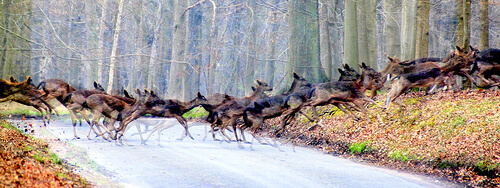White-tailed deer, which is the most common type of deer found in the United States, can be found in most of North America. They are found throughout the continental US, including most of Canada, Mexico, and Central America. However, their population density and distribution can vary depending on the region and local habitat conditions. If you are considering adding deer control services to your current business, it may be helpful to review populations. You can contact local agencies for county numbers.
These are the 2024 deer population numbers:
States with Over 1 Million Whitetail Deer
- Texas: 4.5 - 5.5 million
- Michigan: 1.5 - 2 million
- Wisconsin: 1.3 - 1.6 million
- Mississippi: 1.5 - 1.8 million
- Missouri: 1.2 - 1.5 million
- Pennsylvania: 1.2 - 1.5 million
- Alabama: 1.5 - 1.8 million
- Georgia: 1.2 - 1.3 million
- Minnesota: 800,000 - 1.2 million
- North Carolina: 800,000 - 1.3 million
States with 500,000 - 1 Million Whitetail Deer
- Kentucky: 800,000 - 1.1 million
- Indiana: 600,000 - 1 million
- Virginia: 700,000 - 1 million
- Tennessee: 600,000 - 900,000
- Ohio: 500,000 - 750,000
- Kansas: 500,000 - 750,000
- Oklahoma: 500,000 - 750,000
- Illinois: 500,000 - 700,000
- South Carolina: 500,000 - 800,000
- Arkansas: 800,000 - 1.1 million
- Louisiana: 400,000 - 550,000
States with Under 500,000 Whitetail Deer
The remaining states generally have whitetail deer populations under 500,000, with many under 200,000 like Arizona, California, Colorado, Iowa, Montana, Nevada, North Dakota, South Dakota, and Wyoming.Texas stands out with by far the largest whitetail deer population in the country at over 5 million. Michigan, Wisconsin, Mississippi, Missouri, Pennsylvania, Alabama, and Georgia also have particularly high numbers exceeding 1 million whitetail deer each.It's worth noting that deer populations are constantly changing, so these numbers might not reflect current situation, and that deer populations can also fluctuate depending on factors such as hunting and habitat loss. Additionally, these figures also do not take into account the Mule deer which is present in western states and have a considerable population as well.

